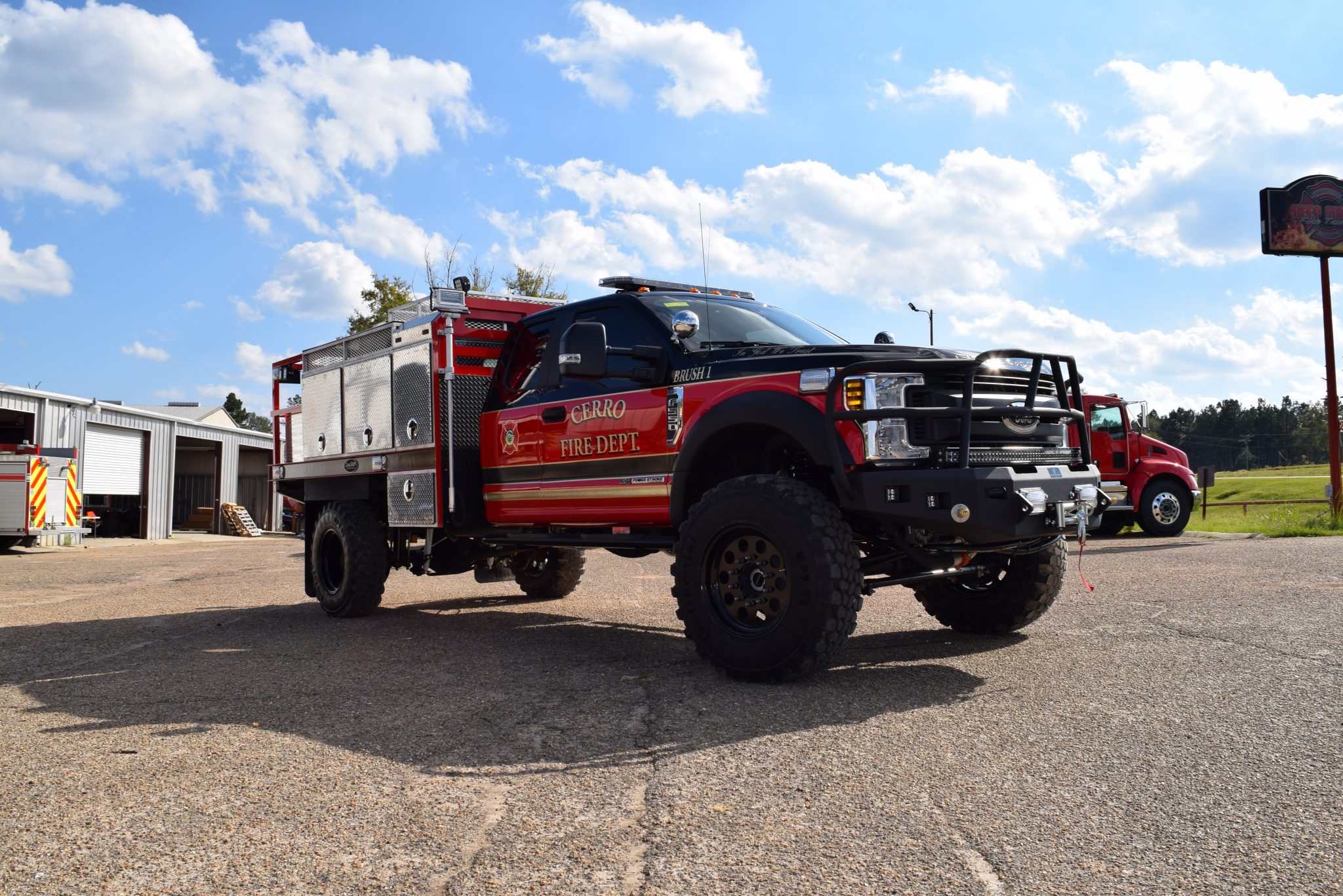Used Brush Fire Trucks For Sale: A Comprehensive Guide for Departments and Organizations pickup.truckstrend.com
In the relentless battle against wildfires and brush blazes, specialized apparatus like brush fire trucks are indispensable. These rugged, agile vehicles are purpose-built to navigate challenging off-road terrain, reach remote fire lines, and deliver crucial water and foam where larger municipal pumpers cannot. For fire departments, volunteer organizations, and industrial entities looking to bolster their firefighting capabilities without the prohibitive cost of new equipment, the market for Used Brush Fire Trucks For Sale offers a compelling and often highly effective solution.
This comprehensive guide delves into everything you need to know about acquiring a pre-owned brush fire truck, from understanding their core features and benefits to navigating the inspection process and making a smart investment.
Used Brush Fire Trucks For Sale: A Comprehensive Guide for Departments and Organizations
Why Consider a Used Brush Fire Truck? The Strategic Advantage
Investing in a used brush fire truck isn’t just about cutting costs; it’s a strategic decision that offers several significant advantages:
- Cost-Effectiveness: This is undoubtedly the primary driver. A used brush truck can be acquired for a fraction of the cost of a brand-new unit, freeing up valuable budget resources for other essential departmental needs, training, or equipment upgrades.
- Immediate Availability: New apparatus often come with lengthy lead times, sometimes extending over a year, due to manufacturing schedules and customization. Used trucks are typically available for immediate purchase and deployment, crucial for departments facing urgent operational gaps or growing wildfire threats.
- Proven Performance: Many used trucks have a service history, demonstrating their reliability and performance in real-world scenarios. A well-maintained used vehicle often has years of operational life remaining.
- Ideal for Smaller or Volunteer Departments: For departments with limited budgets or volunteer-driven operations, used trucks provide an accessible entry point to acquiring specialized wildland firefighting capabilities that might otherwise be out of reach.
- Customization Potential: While buying used, there’s often flexibility to upgrade or modify certain components (e.g., lights, radios, additional storage) to better suit specific departmental needs without the initial high investment of a custom build.
- Environmental Benefit: Reusing and extending the life cycle of existing apparatus contributes to sustainability by reducing the demand for new manufacturing and the associated resource consumption.

Key Features and Components of a Brush Fire Truck
Understanding the anatomy of a brush fire truck is crucial for evaluating a used unit. While configurations vary, common elements include:
- Chassis: Typically a 4×4 or 6×6 commercial pickup truck (e.g., Ford F-Series, Ram, Chevrolet Silverado) or a medium-duty truck chassis. It must be rugged, with high ground clearance and often upgraded suspension for off-road navigation.
- Water Tank: Capacities typically range from 200 to 750 gallons, though larger units exist. Materials include polypropylene (poly), stainless steel, or galvanized steel. Poly tanks are popular for their corrosion resistance and lighter weight.
- Pump System: This is the heart of the apparatus. Pumps can be PTO (Power Take-Off) driven from the truck’s engine or powered by a dedicated auxiliary engine (e.g., Honda, Kubota). Flow rates (GPM – Gallons Per Minute) vary, designed for lower volume, high-pressure applications common in wildland firefighting.
- Hose Reels & Nozzles: At least one, often two, booster reels with small-diameter hose (1-inch to 1.5-inch) for rapid deployment. Various nozzles are used, including straight stream, fog, and specialized wildland nozzles.
- Foam Proportioning System: Class A foam systems are essential for wildland fires, reducing water’s surface tension and allowing it to penetrate fuels more effectively. These can be integrated or skid-mounted.
- Storage Compartments: Ample space for hand tools, chainsaws, portable pumps, medical kits, and personal protective equipment (PPE).
- Personnel Cab: Designed for crew safety, often with seating for 2-5 firefighters, and equipped with communication radios.
- Emergency Lighting & Sirens: Essential for safe transit and scene visibility, increasingly featuring LED technology.
- Optional Equipment: Winches, brush guards, remote-controlled monitor nozzles (turrets), scene lighting, and self-contained breathing apparatus (SCBA) storage.


Where to Find Used Brush Fire Trucks For Sale
The market for used fire apparatus is robust. Here’s where to begin your search:
- Specialized Fire Apparatus Dealers: These are often the most reliable source. Dealers specialize in buying, refurbishing, and selling used fire trucks. They typically offer a wider selection, may provide some form of limited warranty, and handle necessary paperwork.
- Online Marketplaces & Auction Sites:
- GovDeals, IronPlanet, PublicSurplus: Government surplus auction sites are excellent for finding apparatus retired by municipal departments. Prices can be very competitive, but units are usually sold "as-is."
- Commercial Vehicle Classifieds: Websites like TruckPaper.com, CommercialTruckTrader.com, and even eBay Motors can list units from private sellers or smaller dealers.
- Direct from Fire Departments: Some departments sell their older apparatus directly to other departments or individuals. Networking at fire service events or checking departmental websites can uncover these opportunities.
- Auctions (Local & Regional): Keep an eye on local government auctions or specialized heavy equipment auctions. These can be unpredictable but offer potential bargains.
- Industry Publications & Associations: Trade magazines and fire service association websites sometimes feature classifieds or dealer advertisements.
Important Considerations When Buying Used
Thorough due diligence is paramount when purchasing a used brush fire truck.
- Budget Allocation: Beyond the purchase price, factor in potential costs for:
- Pre-purchase inspection by a qualified mechanic.
- Necessary repairs or deferred maintenance.
- Transportation to your location.
- Any desired upgrades or customization (e.g., new lighting, radio systems).
- Insurance and registration.
- Condition Assessment: This is the most critical step.
- Chassis & Drivetrain: Inspect for rust on the frame, fluid leaks (engine, transmission, axles), tire condition, brake wear, and the overall health of the engine and transmission. Test 4×4 engagement.
- Pump System: Look for leaks, test the pump’s prime, pressure, and flow. Check all valves and gauges for proper operation.
- Water Tank: Inspect for cracks, leaks, and signs of internal corrosion (if visible).
- Electrical System: Test all lights (emergency, scene), sirens, radio systems, and auxiliary power outlets.
- Safety Features: Ensure seatbelts are functional, and any roll-over protection is intact.
- Overall Apparatus Body: Check for structural integrity, damage from previous incidents, and compartment functionality.
- Documentation & Service Records: Request comprehensive maintenance logs, repair histories, and any incident reports. A well-documented service history is a strong indicator of a unit’s reliability.
- NFPA Compliance: While older used trucks may not meet the latest NFPA (National Fire Protection Association) standards for new apparatus, understand which standards were applicable at the time of manufacture and if any modifications bring it closer to current safety requirements.
- Operational Needs Match: Ensure the truck’s water capacity, pump type, and overall size are appropriate for your department’s specific terrain, response area, and typical incident profile.
The Buying Process: A Step-by-Step Guide
- Define Your Needs: Clearly outline your requirements: water capacity, pump type, chassis preference (e.g., skid unit, full truck), budget range, and essential features.
- Research & Shortlist: Use the sources mentioned above to identify potential candidates that match your criteria.
- Initial Contact & Information Gathering: Contact sellers for detailed photos, specifications, maintenance records, and any known issues. Ask for a virtual tour if possible.
- On-Site Inspection & Testing: If the truck meets initial criteria, schedule a physical inspection. This should include starting the vehicle, driving it (if permitted), operating the pump, and testing all auxiliary systems. Ideally, bring a mechanic or experienced fire apparatus operator.
- Professional Appraisal/Inspection: For significant investments, consider hiring an independent third-party fire apparatus inspection service. They can provide an unbiased assessment of the truck’s condition and potential issues.
- Negotiation: Based on your inspection findings and market value, negotiate the price. Don’t be afraid to ask for concessions for identified deficiencies.
- Paperwork & Payment: Ensure a clear bill of sale, title transfer, and any other necessary legal documentation. Understand payment terms (e.g., wire transfer, certified check).
- Transportation & Delivery: Plan how the truck will be transported to your location. This might involve driving it yourself, hiring a specialized heavy haulage company, or arranging delivery through the dealer.
- Post-Purchase Maintenance & Training: Once acquired, schedule immediate preventative maintenance. Familiarize your crew with the truck’s specific features and operational procedures through dedicated training.
Potential Challenges and Solutions
While buying used offers benefits, it’s not without potential hurdles:
- Challenge: Hidden Mechanical Issues: A truck might look good but have underlying problems.
- Solution: Thorough pre-purchase inspection by a qualified, independent mechanic specializing in heavy trucks or fire apparatus.
- Challenge: Lack of Service Records: Without a maintenance history, assessing past care is difficult.
- Solution: Factor in a more extensive initial service and potential repairs. Lower your offer price to account for this uncertainty.
- Challenge: Outdated Technology: Older trucks may lack modern features like LED lighting, advanced pump controls, or foam systems.
- Solution: Budget for upgrades if these features are critical. Many older trucks are solid platforms for modernization.
- Challenge: Finding the "Right Fit": The perfect truck might not be immediately available.
- Solution: Be patient, broaden your search geographically, and communicate clearly with dealers about your specific needs.
- Challenge: Transportation Logistics: Moving a large apparatus can be complex and costly.
- Solution: Work with the seller or a specialized transport company to arrange safe and compliant delivery.
Estimated Price Table for Used Brush Fire Trucks
Prices for used brush fire trucks vary dramatically based on age, mileage, condition, features, and original manufacturer. The table below provides a general estimate to help with budgeting. These are illustrative ranges and actual prices will differ.
| Type of Brush Truck | Year Range | Water Capacity (Gallons) | Pump GPM (Est.) | Condition | Estimated Price Range (USD) | Key Features / Notes |
|---|---|---|---|---|---|---|
| Skid Unit (Standalone) | 2000-Present | 100-300 | 50-150 | Fair-Good | $5,000 – $25,000 | Can be mounted on existing pickup beds, highly versatile. |
| Light Duty (Pickup Chassis) | 2005-2015 | 200-400 | 100-250 | Good | $25,000 – $60,000 | Common, agile, good for rapid response. |
| Medium Duty (Pickup/Chassis Cab) | 2010-2020 | 400-750 | 150-300 | Good-Excellent | $60,000 – $120,000 | More robust, higher capacity, often with foam systems. |
| Heavy Duty (Medium Truck Chassis) | 2000-2010 | 750-1250 | 250-500 | Fair-Good | $50,000 – $100,000 | Ex-military or forestry service, very rugged, higher mileage. |
| Specialized/Custom Built | 2015-Present | 300-600 | 150-300 | Excellent | $120,000 – $200,000+ | Less common as "used," but might find newer models with specific upgrades. |
Note: Prices do not include potential inspection costs, repairs, transportation, or customization.
Frequently Asked Questions (FAQ) about Used Brush Fire Trucks
Q1: What’s the typical lifespan of a used brush truck?
A1: With proper maintenance, a well-built brush truck chassis can last 20-30 years, and the apparatus components (pump, tank) can last even longer if cared for. Much depends on the original quality, service history, and how it was used.
Q2: Do used trucks come with a warranty?
A2: Most private sales or auction purchases are "as-is." Reputable fire apparatus dealers, however, may offer a limited warranty on certain components (e.g., pump, engine) for a short period, or guarantee the truck will pass a specific inspection. Always clarify warranty terms in writing.
Q3: Can I get financing for a used brush truck?
A3: Yes, financing is available. Many specialized lenders work with fire departments and municipalities. Dealers often have relationships with these lenders. Interest rates and terms will depend on the age of the vehicle, the borrower’s creditworthiness, and the loan amount.
Q4: Are there specific certifications or standards I should look for?
A4: While new apparatus must meet NFPA 1901 or 1906 (for wildland fire apparatus), older used trucks may not. It’s important to understand the standards applicable at the time of manufacture. Focus on mechanical soundness, safety features (e.g., seatbelts, ROPS – Roll-Over Protection Structure if applicable), and ensure it meets your local operational safety requirements.
Q5: How important are service records?
A5: Extremely important. Comprehensive service records provide a transparent history of maintenance, repairs, and any significant incidents. They are the best indicator of how well the truck was cared for and can help predict future maintenance needs. A lack of records should prompt a more rigorous inspection.
Q6: What’s the difference between a "brush truck" and a "wildland engine"?
A6: The terms are often used interchangeably, but "wildland engine" (or Type 3, 4, 5, 6 engine by NFPA/NWCG standards) typically implies a more standardized and often larger apparatus specifically designed to meet rigorous wildland firefighting standards. A "brush truck" can be a broader term, sometimes referring to smaller, more basic units, or those built on common commercial pickup truck chassis, that may not adhere to all the same national standards but are perfectly effective for local brush fire response.
Conclusion
The market for used brush fire trucks offers an invaluable opportunity for fire departments, industrial brigades, and volunteer organizations to acquire essential wildland firefighting capabilities without the substantial investment required for new apparatus. By understanding the key features, knowing where to search, conducting thorough inspections, and asking the right questions, buyers can make an informed decision that secures a vital, cost-effective asset for their community’s safety. A well-chosen used brush truck isn’t just a vehicle; it’s a critical tool in protecting lives and property from the ever-present threat of wildland fires.



